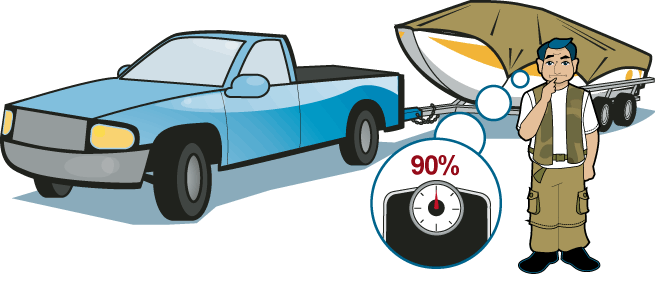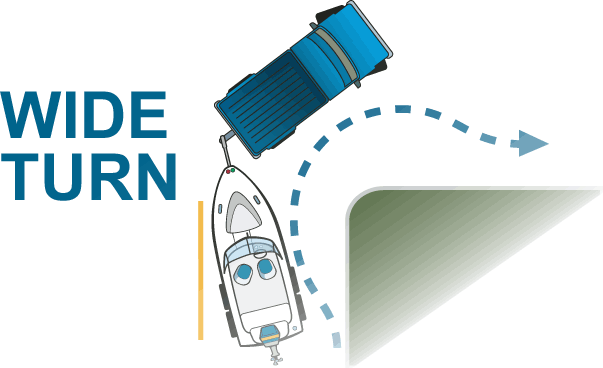Boat Towing & Trailering
Safe Towing Preparation
The first step in getting ready to tow your boat is making sure your towing vehicle is up to the task—a small vehicle may not be able to safely handle the load.
You also need to make sure that you have the right trailer, hitch and safety chains for the job.
Like your boat, your trailer should come with a capacity plate attached. Before hitting the road, check the plate to make sure that your trailer has the capacity to carry not only the weight of your boat, but also the motor, fuel and any additional gear you are taking on board.
Pay particular attention to the tongue weight marked on the capacity plate. A tongue that is too heavy will make it difficult to steer, while a tongue that is too light may result in the boat fishtailing.
Finally, match the trailer class with the proper hitch. The coupler should never be smaller than the size of the ball hitch. Always make sure that that the hitch and ball are secure before leaving the driveway.

| Trailer Class | Towing Weight |
|---|---|
| 35 feet or less | not to exceed 2000 lb. |
| 36 - 39 feet | 2001 lb. to 3500 lb. |
| 40 - 42 feet | 7.5 |
| 43 - 45 feet | 3501 lb. to 5000 lb. |
| 46 - 52 feet | over 5000 lb. up to 12,000 lb. |
Make sure your trailer has the capacity to carry your boat and motor, fuel and additional gear onboard.
Gross Axle Weight Rating (GAWR) and Gross Vehicle Weight Rating
You can find out whether your towing vehicle and your trailer are up to the task of safely towing your boat by checking their Gross Axle Weight Rating and Gross Vehicle Weight Rating.
Both your trailer and vehicle come with these ratings, which can be found in the owner's manuals.
It is important that you never exceed 80% of the recommended weight ratings for either your vehicle or trailer.
When you are buying a trailer or a towing vehicle, always consult with the dealer to make sure that you are getting the right trailer and vehicle to meet your towing needs.

Final Preparation for Towing a Boat
Here are the final steps you should take before heading out on the road with your trailered boat.
- Make sure that your boat is centered on the trailer and that any fuel and gear are distributed evenly. Just like on the water, an uneven load can cause instability. It also makes steering and maneuvering much more difficult.
- Tie down all loose items and equipment in and on your boat.
- When attaching the trailer to the towing vehicle, make sure to crisscross your chains under the frame. The chains must be able to support the weight of the entire load. This is critical for safety if the hitch should break.
- Check to make sure that the trailer brake lights and directional lights are all working. That way other drivers will know when you're stopping, braking or turning.
- Check the tire pressure and ensure the lug nuts are tight and secure.
- Adjust your side view mirrors so that you can get a clear view of the trailer and any traffic behind you.
- Practice turning and backing up with the trailer attached. It takes time to get used to these maneuvers, so it's important to practice gaining expertise and confidence.
- Finally, use some additional straps to tie down the boat to the trailer frame.
Alright, it looks like we're ready to roll!
Road Handling
You need to be extra careful when you're driving with a cumbersome load like a boat and trailer.
For one thing, the load will make your vehicle much less responsive, so reduce your speed and give vehicles in front of you additional room. This will give you more time to maneuver and react if you need to.

Always remember, you have another vehicle attached behind you. That means you need to take corners at slower speeds and at wider angles to make sure your trailer can get around safely.
Slow down and make safe wide turns.
